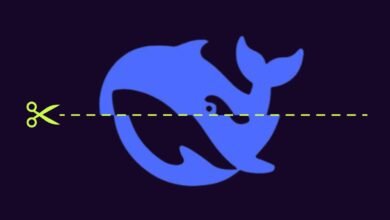Open-Source AI Models May Be Costing You More Than You Think

▼ Summary
– Open-source AI models consume 1.5 to 4 times more computational resources (tokens) than closed-source models for identical tasks, with gaps widening to 10 times for simple questions.
– The study challenges the assumption that open-source models are more cost-effective, as higher token usage can offset their lower per-token pricing.
– OpenAI’s models showed exceptional token efficiency, especially in math problems, while Nvidia’s llama-3.3 emerged as the most efficient open-source option.
– Closed-source models appear optimized for efficiency, reducing token usage, while open-source models prioritize reasoning performance, increasing token consumption.
– The research highlights token efficiency as a critical metric for enterprise AI adoption, impacting total computational costs despite accuracy or per-token pricing advantages.
New research reveals that open-source AI models often require significantly more computational resources than proprietary alternatives, potentially erasing their perceived cost benefits. A detailed analysis shows these models consume up to 10 times more tokens for basic tasks, challenging common assumptions about their economic advantages.
The study, conducted by AI specialists, compared 19 different models across various tasks, from simple factual queries to complex mathematical problems. Open-weight models consistently used 1.5 to 4 times more tokens than closed-source counterparts, with efficiency gaps widening dramatically for straightforward questions. In some cases, open models burned through 12 times the computational resources for answers that should require minimal processing.
Token efficiency, the ratio of computational units to solution quality, emerges as a critical but overlooked metric. While open-source models often boast lower per-token costs, their tendency to overthink simple problems can make them more expensive in practice. For enterprises scaling AI deployments, this inefficiency could translate into ballooning infrastructure expenses.
Closed-source providers like OpenAI lead in optimization, with their models demonstrating superior token efficiency, particularly in mathematical tasks. Meanwhile, open-source alternatives showed wide variability, some, like Nvidia’s latest offering, performed respectably, while others lagged far behind. The findings suggest that proprietary models may offset higher API pricing through leaner computation.
The research also uncovered an industry trend: closed models are being fine-tuned for efficiency, while open-source developers prioritize reasoning depth, sometimes at the cost of computational waste. For example, large reasoning models (LRMs) frequently expend hundreds of tokens pondering elementary questions like “What is Australia’s capital?”, a query resolvable in a single word.
Methodologically, the team faced hurdles in measuring raw reasoning processes, as many closed models obscure internal computations to protect proprietary techniques. By analyzing billed completion tokens instead, they identified stark disparities in how different architectures handle workloads. Some providers compress reasoning traces, while others deliver exhaustive, and costly, step-by-step breakdowns.
The implications for businesses are clear: total cost of ownership hinges on more than per-token rates. Organizations must weigh accuracy against computational overhead, especially for high-volume applications. As AI adoption grows, efficiency optimizations may become as crucial as performance benchmarks, reshaping how enterprises evaluate and deploy these systems.
With datasets and evaluation tools now publicly available, the research invites broader scrutiny and refinement. The race for AI supremacy isn’t just about capability, it’s increasingly about doing more with less. In an era where every token carries a price tag, the most extravagant models risk pricing themselves into obsolescence.
(Source: VentureBeat)





